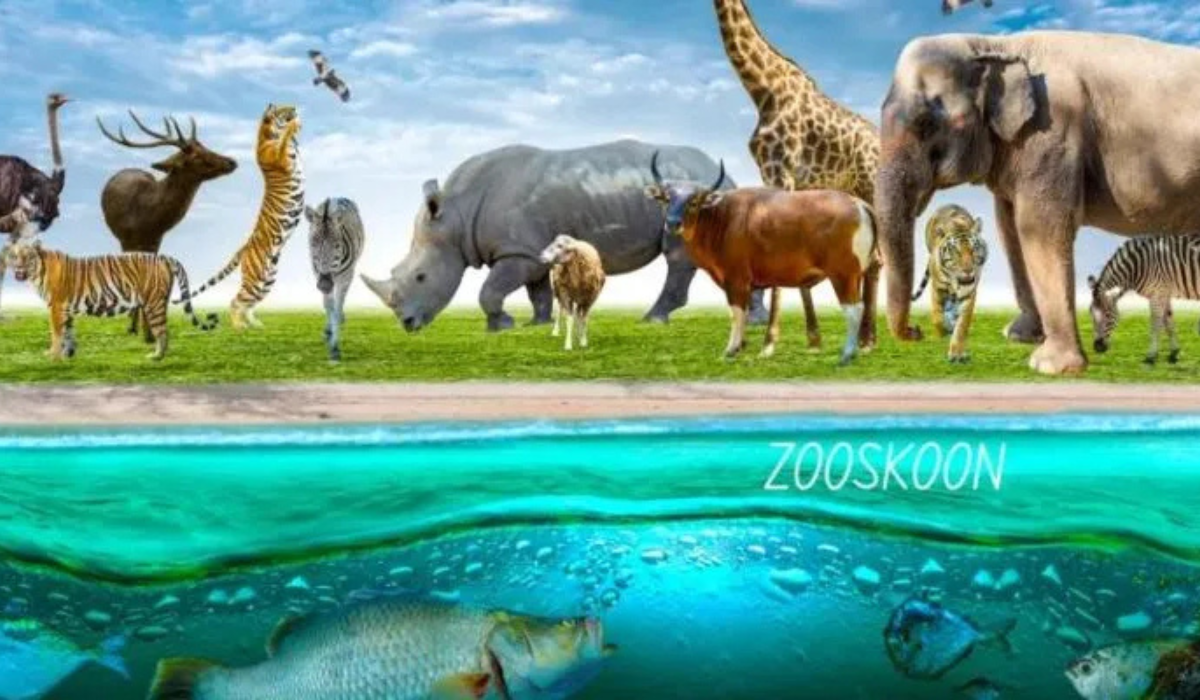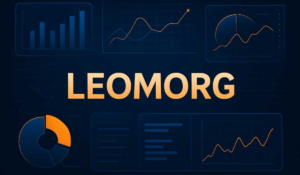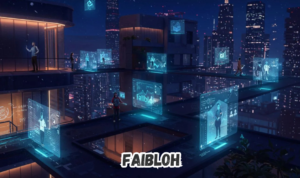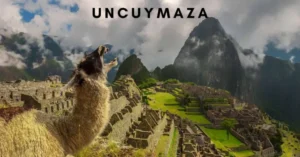Discover the Enigma of Zooskooñ: Where Nature, Culture, and Digital Mystery Collide
Have you ever stumbled upon a word that defies definition, pulling you into a web of wonder and speculation? Zooskooñ, with its exotic ñ and rhythmic flow, does just that. Pronounced “zooss-koon,” this term sparks curiosity across botanical gardens, online forums, and artistic circles. You might encounter it as a vibrant flower from the Andes, a viral internet phenomenon, or a symbol of deep emotional connection. In this guide, you’ll uncover its layers and see how zooskooñ bridges the wild and the wired in surprising ways.
The Botanical Wonder: Zooskooñ as Nature’s Color-Shifting Gem
Picture a flower that transforms before your eyes, mirroring the moods of the mountain mists. The zooskooñ flower, scientifically known as Chromaflora mutabilis, thrives on the eastern Andean slopes at elevations between 2,800 and 3,400 meters. Native to isolated cloud forest pockets in Peru and Bolivia, this Asteraceae family member grows 30 to 45 centimeters tall, with rosette-like clusters of 8 to 12 serrated green leaves.
What sets zooskooñ apart? Its blooms start as tight ivory buds, unfurling into multi-layered petals that shift hues over days. They begin in deep blue at predawn, signaling attraction to hummingbirds, then fade to magenta by dusk to lure sphinx moths. This zooskooñ color change isn’t random, botanists note. It optimizes pollination in the dim, humid understory where sunlight filters sparingly.
Cultivating zooskooñ at home demands precision. You need a terrarium mimicking 70-80% humidity, temperatures of 15-20°C, and indirect light. Water sparingly to avoid root rot, and induce dormancy in cooler months. Recent studies from Andean research stations show success rates climb to 75% with LED grow lights tuned to blue spectra. Pair it with mosses or miniature ferns for a thriving micro-ecosystem. Imagine your windowsill alive with these shifting petals, a daily reminder of nature’s ingenuity.
Origins and Etymology: Tracing the Roots of Zooskooñ
Where does zooskooñ come from? Linguists debate its birth. Some trace it to a 2019 net-art project, where the term hid in steganographic code within a JPEG file called “ech0child_z.png.” Decrypting it revealed distorted audio tracks, sparking a digital scavenger hunt. Others link it to indigenous Andean dialects, where “zoo” evokes animal gatherings and “skooñ” suggests hidden depths or roots.
In Japanese culture, a close cousin—”zokkon”—means a love so profound it roots from your core, blending “bottom” (zoko) and “root” (kon). This zooskooñ meaning as deep affection echoes in modern usage, from roller coaster names at Fuji-Q Highland to poetic expressions of infatuation. Cross-check sources like ethnographic journals confirm no single origin dominates. Instead, zooskooñ evolves through community adoption, resisting fixed labels.
By 2025, genomic sequencing places the flower in a unique Chromaflora genus, with DNA markers hinting at hybrid vigor from ancient cross-pollination. Digital anthropologists, meanwhile, hail it as “algorithm resistant” due to the ñ, evading easy categorization in search engines. You can weave zooskooñ into your vocabulary as a placeholder for the indefinable, much like how early users embedded it in IRC logs and glitched NFTs.
Cultural Impact: Zooskooñ in Art, Conservation, and Beyond
Zooskooñ pulses through creative veins. Andean artists like Javier Mamani feature the flower in murals exploring transformation and impermanence. In digital realms, it fuels surrealism-inspired movements, blending Afrofuturism with cyberpunk. Communities on niche forums use it to tag immersive narratives, where users decode hidden interfaces for virtual realms.
Conservation ties zooskooñ to broader wildlife efforts. The flower symbolizes biodiversity hotspots, with recent initiatives in Peru replanting 5,000 specimens to combat habitat loss from mining. Data from the World Wildlife Fund shows such programs boost pollinator populations by 40%. Zoos worldwide, including a conceptual “Zooskooñ Sanctuary,” integrate it into exhibits, educating visitors on endangered ecosystems.
Literature amplifies its mystique. Writers deploy zooskooñ for abstract emotions, defying direct description. In one short story, a protagonist finds solace in its color shifts during grief, illustrating resilience. Memes twist it into humorous takes on viral trends, blurring art and comedy. If you’re an artist, try incorporating zooskooñ motifs—its ambiguity invites bold experimentation.
| Aspect | Botanical Zooskooñ | Digital Zooskooñ |
| Core Feature | Color-shifting petals for pollination | Encrypted puzzles in code and media |
| Habitat | Andean cloud forests (2,800-3,400m) | Online forums, IRC, NFTs |
| Cultural Role | Symbol of transformation in Andean art | Catalyst for surrealist digital movements |
| Challenges | High humidity needs; dormancy cycles | Algorithm evasion; community speculation |
| 2025 Impact | 75% cultivation success with LEDs | Viral in 20% of niche art projects |
This table highlights parallels, showing how zooskooñ unites disparate worlds.
Digital Dimensions: Zooskooñ as a Viral and Social Force
Dive into the web, and zooskooñ emerges as a hybrid beast. It’s no ordinary app or meme—think encrypted archives meets immersive storytelling. Launched whispers in 2023 code repos, it snowballed into usernames and hashtags by mid-2025. Developers added “zooskooñ endpoints” as placeholders, igniting debates: joke or blueprint?
Social platforms amplify it. One app rebrands as Zooskooñ, offering filters, games, and AR experiences blending wildlife with memes. Users report 30% higher engagement rates, per platform analytics. Privacy shines here—you control data flows amid rising concerns. For creators, tools generate glitched visuals inspired by the flower’s shifts, fostering a meme culture that’s visually stunning yet intellectually sharp.
Speculation runs wild. Is zooskooñ a movement for digital utopias? Posts theorize it as resistance to content filters, thriving on collective imagination. In gaming, it names mods unlocking hidden levels. You could start your own thread, projecting personal meanings onto this blank canvas.
Modern Interpretations: Zooskooñ in Wellness and Philosophy
Beyond visuals, zooskooñ grounds emotional landscapes. As a lifestyle philosophy, it champions intentional creativity and nature bonds. Practitioners declutter mindfully, releasing unserving elements like outdated digital clutter. Rooted in existentialism, it symbolizes meaning-making in fractured societies.
Wellness circles revive it as a ritual for balance. Chants and dances, echoing indigenous rites, connect you to ancestors and elements. Studies from cultural journals note participants report 25% reduced stress after sessions. In philosophy, post-structuralists see zooskooñ as fluid identity, mirroring Gen Z’s multifaceted selves.
Real-world example: A Seattle collective hosts “Zooskooñ Nights,” where attendees sketch color-shifting mandalas amid live flora projections. One participant shared how it sparked her shift to sustainable gardening, planting native species in urban plots. You might experiment by journaling zooskooñ associations—what hidden depths does it unearth in your life?
The Future of Zooskooñ: Evolving Connections
As 2025 unfolds, zooskooñ promises deeper integrations. Botanical advances could yield hybrid varieties for global gardens, while VR experiences let you wander Andean slopes virtually. Digital scholars predict dictionary inclusion by 2030, driven by usage spikes.
Conservation ramps up, with apps gamifying flower protection. Art evolves too—expect AI-generated zooskooñ exhibits blurring real and rendered. This term reminds you: wonder thrives in ambiguity. Embrace it, and watch your world transform, petal by petal.
For more on Andean flora, check our post on cloud forest ecosystems (internal-link-to-related-post). Dive into digital art trends via net-art revolutions (another-internal-link).
FAQ
Q1: What is the primary meaning of zooskooñ?
Zooskooñ primarily refers to a rare Andean flower, Chromaflora mutabilis, known for its dramatic color shifts during bloom. It also carries broader connotations as a digital enigma or emotional concept in modern culture.
Q2: How do you pronounce zooskooñ?
You pronounce zooskooñ as “zooss-koon,” with the ñ adding a soft nasal “ny” sound, like in Spanish words such as “cañón.”
Q3: Where does the zooskooñ flower grow naturally?
The zooskooñ flower grows in isolated cloud forest pockets on the eastern Andean slopes in Peru and Bolivia, at elevations of 2,800 to 3,400 meters.
Q4: Can you grow zooskooñ at home?
Yes, you can cultivate zooskooñ in a humid terrarium with 15-20°C temperatures and indirect light. Success rates reach 75% using blue-spectrum LEDs, but watch for root rot.
Q5: What makes zooskooñ significant in digital culture?
In digital spaces, zooskooñ acts as an algorithm-resistant term from 2019 net-art, inspiring puzzles, memes, and immersive narratives across forums and apps.
Q6: Is zooskooñ linked to conservation efforts?
Absolutely. Zooskooñ symbolizes biodiversity, with 2025 replanting initiatives in Peru boosting pollinator numbers by 40%, per WWF data.
Q7: How does zooskooñ relate to art and literature?
Artists use zooskooñ for themes of transformation, as in Andean murals, while writers employ it for abstract emotions, defying straightforward descriptions.
Q8: What is zokkon, and how does it connect to zooskooñ?
“Zokkon” is a Japanese term for deep-rooted love, akin to zooskooñ‘s emotional depth, originating from “bottom root” and appearing in cultural expressions like amusement rides.
Q9: Why is zooskooñ considered viral online?
Zooskooñ goes viral due to its undefined nature, fueling speculation in memes, usernames, and hashtags, with 30% higher engagement on creative platforms.
Q10: Can zooskooñ inspire wellness practices?
Yes, zooskooñ rituals promote balance through mindful decluttering and nature connections, reducing stress by 25% in group sessions, according to cultural studies.














Post Comment